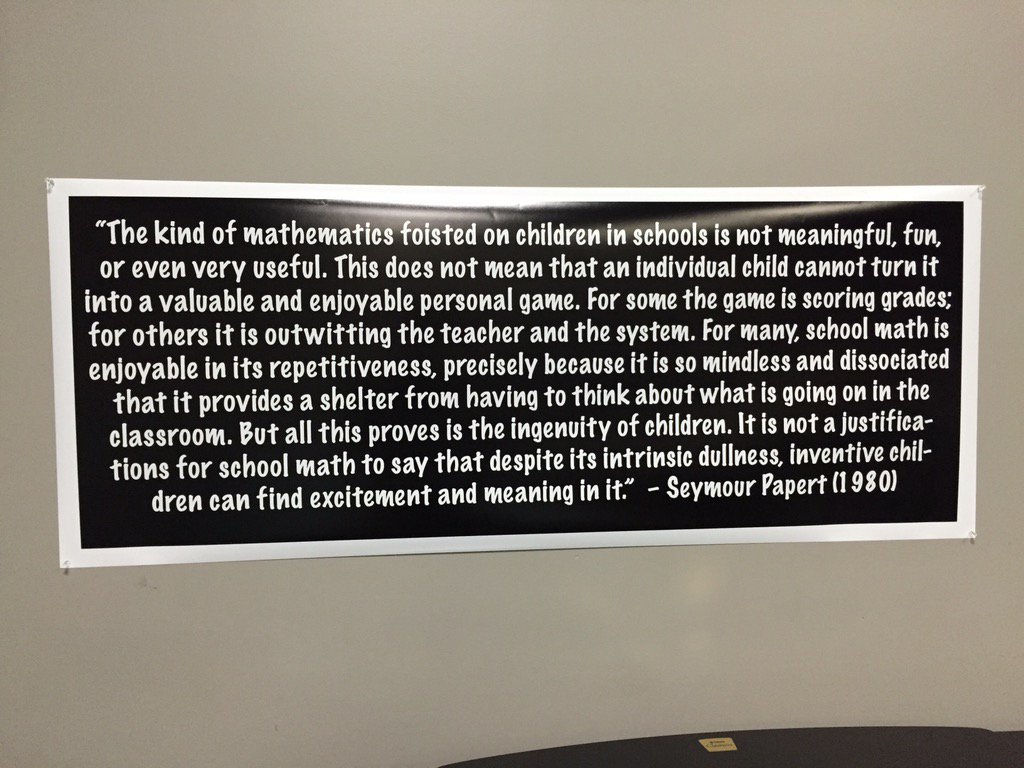There is a common misconception that a square metre has to be square in shaped.
When children are introduced to square centimetres and square metres, its easy to understand how this misconception grows.I wonder though if it prevents children from being able to deepen their conceptual understanding of surface area.
I wonder if by constantly having children use square cm and square m as a unit of measurement, are we denying them from really understanding how surface area is a measurement of space rather than a measurement of number of square cm etc.
To help address this misconception and to deepen our conceptual, understanding of surface area, the children entered and saw a piece of paper on the floor surrounding by metre rulers:
We did a 'silent gallery observation' where children came up close and observed what they saw and then returned to their see-think-wonder paper to record their thinking. They could keep returning to the display as much as they wanted:
After recording, the children shared their ideas with their table partners and then we shared and discussed some of these as a class:

We thought the first wondering was interesting, so in pairs we found ways to try to find out how many square cm equals 1 square metre.
We had quite a few different ideas and strategies.
When students shared, one in particular stood out where she showed how we measure the area of a rectangle:
She then used this explanation to explain how we can find out using the same strategy:
We thought 10 000 was a lot, but also interestingly, when we sat around the square metre paper again, a few of those commented that it seemed there were a lot more than 10 000 fitting inside it. I had to agree.
I then posed the question: Does a square metre have to be square in shape?
We wrote our theories on a post it and then posted them on the line (above).
We noticed how it was almost 50-50.
We heard from some people who thought it had to be a square and their reasonings.
We then heard from others who were in the middle and finally we heard from those who thought it doesn't have to be square in shape.
To help with the debate that took place, I then cut part of the square metre paper.
I then moved that cut part and joined it to another part of the paper.
What shape have I created?
- A decagon.
Is this area still 1 square metre?
We had a stand off again with a 50-50 opinion.
We heard some ideas and their reasonings.
One student then remarked how it is still 10 000 square centimetres and that's why it is still 1 square metre.
Ohhhhhhh.........
Light bulbs started flashing all around.
Another then remarked,so if think whether the surface area is 10 000 square cm, then we will know if it is a square metre.
We all agreed.
Estimating is a key skill we should always encourage children to do in maths. When we estimate numbers etc, we are gaining a deeper sense of the concept.
We then did a hunt for objects in our room that we estimated had an area less than, approximately equal to, and greater than a square metre.
After gaining a better sense of the size of a square metre, we then thought about how we could create different shapes that had a surface area of 1 square metre.
Children partnered up with others and sketched possible ideas. Loads of rich reasoning discussions and creative ideas took place.
Some samples:
We partners felt confident in their measurements, they then used masking tape to create their 1 square metre shapes. We didn't have time to finish these, but when we do, we will then examine the shapes created and see if they are or are not square metre in area.
This pair had sketched a square metre and then split it in half. The then joined the two triangles and worked out the lengths:
Some amazingly creative shapes are been explored and we are all excited about making and sharing them tomorrow......










































